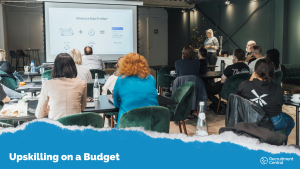How do senior candidates stay motivated during a long hiring process that can stretch for months with multiple interviews and pauses? This article explains today’s executive hiring reality and gives practical steps to manage mindset, protect wellbeing, and use networking to access the hidden job market. It shows how small, consistent actions keep momentum, build resilience, and move you closer to the right offer.
Searching for a new role looks very different today compared to a few years ago. Even at senior levels, recruitment timelines have stretched well beyond expectations. It is now common for processes to take three to six months, with multiple interview rounds, assessments, and long pauses while decisions are made.
For executives and highly specialised professionals, the stakes feel even higher. Many individuals in this space are navigating redundancy, restructuring, or a proactive career move. Long hiring processes add further uncertainty to an already demanding transition.
It is important to remember that these delays are rarely a reflection of your capability or value. They are the result of broader market dynamics, and they can be managed with the right mindset and strategies.
Understanding the Modern Hiring Landscape
Extended processes have become standard across senior recruitment. Several factors contribute:
| Factor | Impact |
|---|---|
| Multi-stage interviews as default | Recruiter screening, skills assessments, video interviews, panel meetings and cultural fit discussions can stretch out for weeks. |
| Caution in decision-making | Budget approvals and shifting business priorities delay final offers, particularly at senior levels where headcount is scrutinised closely. |
| Technology filters | AI-driven screening tools streamline shortlisting but can create distance between candidates and decision-makers. |
| Industry-specific timelines | In consulting, finance, technology, and executive management, three-month timelines are common, even when there is strong interest. |
Recognising these patterns helps you respond strategically to a long hiring process rather than reacting emotionally.
Safeguarding Your Wellbeing
A drawn-out executive search is mentally taxing. High stakes combined with uncertainty can quickly erode confidence. Protecting your mental health and resilience is essential.
Practical strategies include:
- Establish a daily structure, dedicating time for applications and networking, then stepping away.
- Build in recovery breaks; exercise, rest, and unplugged time will sustain momentum.
- Seek professional support, whether through a mentor, executive coach, or trusted peer.
- Acknowledge the strain; rejection or silence is frustrating, but it is not personal.
By investing in your wellbeing, you protect the executive presence and clarity you will need in high-level interviews.
Strategic Networking and Relationship Building
At senior levels, most opportunities are not advertised. Research shows that around 70% of executive placements happen through networks. Building and maintaining relationships is therefore one of the most effective ways to keep your search active while formal processes stall.
- Refresh and optimise your LinkedIn presence.
- Re-engage former colleagues, managers, or industry contacts.
- Join alumni groups, professional associations, and industry events.
- Focus on quality conversations, not quantity. One meaningful discussion often leads to opportunity.
Handling Rejection and Building Resilience
Rejection can feel deeply personal, but context is critical. Often, decisions come down to organisational fit, budget changes, or shifting strategy. None of these diminishes your capability.
Use each stage of the hiring process as a learning:
- Request feedback where possible.
- Note areas where you improved or gained clarity.
- Recognise progress even without an offer.
Practical Motivation Maintenance
Momentum comes from setting achievable, visible goals, even when the overall process is long.
- Complete three tailored applications in a week.
- Secure one new professional connection.
- Update a section of your CV or executive profile.
- Review progress monthly to refine your approach.
Skill development also provides purpose. Whether through executive education, industry insights, or new certifications, continued learning signals to future employers that you remain engaged and forward-looking.
Moving Forward
Extended hiring processes are now part of the executive search landscape. By managing expectations, investing in wellbeing, and activating your professional network, you can maintain momentum and resilience. Each step you take strengthens your readiness for the right offer.
Looking for extra support while navigating your job search?
Explore our Candidate Resources Hub for practical tools, templates, and career advice.
Refresh your materials with Updating Your Resume Made Easy, then stay motivated by subscribing for monthly insights, new roles, and job search tips here.
For more career and interview advice, visit this page.

















